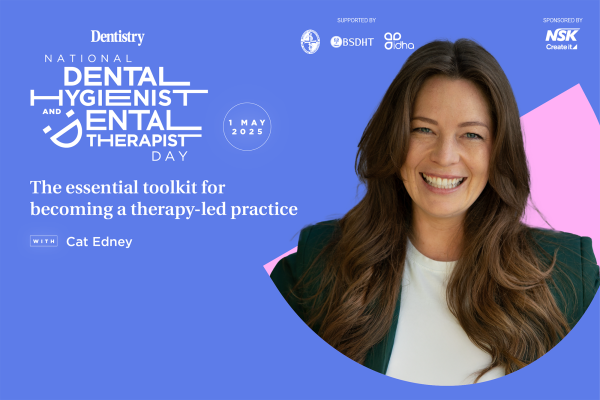
Considering of changing into a therapy-led apply? Cat Edney shares an important, sensible instrument to simplify referrals, increase collaboration and help a easy transition.
Turning into a therapy-led apply isn’t so simple as making a choice to develop into therapy-led – regardless of how decided a enterprise proprietor could also be. There are a number of hurdles and issues alongside the best way.
Practices that try this transition typically encounter comparable challenges:
Your dental therapist is not sure the place to begin: they might lack confidence in remedy planning, performing examinations, and even pricing appropriately
Your associates are confused: they really feel conflicted about how shared care advantages them, fear about legal responsibility, and expertise imposter syndrome when they’re not the only clinician managing affected person care
As a apply proprietor, many questions stay unanswered: you could be unsure about monetary sustainability, methods to construction pay inside this mannequin, or whether or not you’ll be able to generate sufficient affected person circulation to maintain each associates and therapists busy whereas masking working prices
Affected person acceptance is one other key concern: how will sufferers react to this alteration? What is going to occur to your online business should you don’t adapt? And the way a lot monetary pressure can your apply face up to should you proceed with the standard ‘one dentist, one list, one income’ mannequin?
Having labored with a number of practices to implement sustainable and worthwhile shared-care fashions, I’ve developed a variety of instruments to assist companies and groups create methods that work for them. These sources are designed to make sure each course of is optimised, each concern is addressed, and each query has a solution.
To have fun Nationwide Dental Hygienist and Dental Therapist Day, I’m freely giving one of many key instruments: my Fashionable Therapist therapy-led toolkit: you’ll be able to obtain it right here.
The therapy-led toolkit
This instrument is designed to assist information conversations and streamline referral methods inside your apply. It offers a structured strategy to managing referrals between clinicians for any remedy kind. Through the use of this instrument, you’ll be able to:
Clearly outline what ought to be referred
Set up who ought to obtain the referral
Decide what info is required
Establish what kind of appointment is required.
Find out how to use this instrument
Obtain the PDF right here
Customise it in your apply: adapt the framework to replicate your staff’s particular wants and workflows
Prepare your staff: guarantee all clinicians perceive the referral course of and their position inside it
Implement and refine: check the system, collect suggestions and make changes as wanted to optimise effectivity and affected person care.
This instrument will show you how to create a streamlined, efficient referral system that works for any clinician and any remedy kind – serving to your apply transition to a profitable therapy-led mannequin with confidence.
Find out how to customise your referral protocol
I exploit this framework to assist facilitate conversations between clinicians about how and when referrals ought to be made. Every kind of remedy would require a brand new protocol to be devised. I like to begin with one thing that’s extra universally understood, corresponding to a two-surface restoration, however this protocol builder can even work when discussing referrals for oblique restorations and specialist therapies the place the choice making typically varies from clinician to clinician.
By placing these protocols in place and specifying every clinician’s course of, you’ll be able to guarantee referrals are made to the correct clinician on the proper time and sufferers are capable of entry care with out pointless limitations. It’s value noting that gaining access to digital imagery, scans and radiographs will help this course of.
1. Outline what ought to be referred – for this instance, we’re discussing a two-surface restoration
Define the sorts of case that requires referral and categorise them by complexity:
Fundamental instances (eg easy restorations which are D1or D2, not subgingival)
Reasonable instances (eg extra superior caries, both near pulp or in depth to matrix)
Advanced instances (eg subgingival, requiring crown lengthening)
2. Establish the suitable clinician for every referral
Make clear who ought to obtain these referrals inside your staff, making certain correct delegation:
Eg primary and reasonable instances to the dental therapist
Advanced instances that contain crown lengthening to the dentist with particular curiosity.
3. Standardise required info for referrals
Forestall miscommunication by defining the mandatory particulars:
Scientific notes
Radiographs
Vitality testing
Intraoral scans
Therapy goals.
4. Set up appointment sorts and length
Construction appointments to align with referral complexity:
5. Set monetary issues
Guarantee clear pricing for consultations and coverings:
Is a pre session required for any of the complexities?
What charges are to be quoted in every case?
6. Make clear resolution making and follow-up
Outline how referrals are communicated, how clinicians can approve therapies being booked with them, and who follows this up and books the appointments.
Utilise a communication platform such a process supervisor to make sure referrals are trackable.
Click on right here to obtain and implement your therapy-led toolkit.


